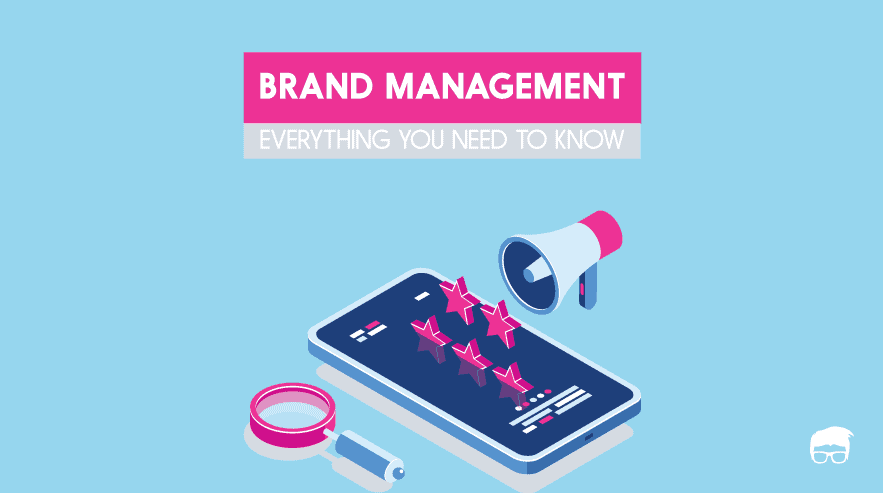A usual day in the office life of a brand manager would be to plan and execute strategies to resonate the brand with the needs, wants, and desires of his target customers. His usual job is to make them think of the brand as something to look up to when they go shopping next.
But it doesn’t end here.
Brand management is just like raising a kid. It’s just that the decisions for the kid are made by the parents even when the kid grows up.
Intrigued a bit?
Well, fret not. Here’s a complete guide explaining what brand management is, it’s importance, elements, strategies, and process.
What Is Brand Management?
Brand management is a function of marketing that makes use of strategies and techniques to analyse and plan how the brand is perceived in the market. It aims to increase the overall perceived value of the brand in the long run and build a loyal customer base through positive brand associations.
Importance Of Brand Management
The main aim of brand management is to build, measure, and control brand equity – making a brand to have its own value which, when associated with the product, increases its overall value both monetarily and non-monetarily.
In this era of extensive competition where different companies sell almost similar products, a brand is what makes a difference. It helps in positioning the offering in a unique way that provides the company with marketplace advantage and boosts the value of a product.
Creating a brand out of the product not only personifies it, but it also creates an experience which stays in the mind of the customers. They recall the experience whenever provided with certain triggers related to the product niche or product usage. Creating such an experience around the product not only helps in increasing its sales but it also helps in extending the product line in future.
The Intangibles Of Brand Management
While the tangible elements of the brand management include the product and its price, packaging, shape, colour, etc., the intangible elements that also plays a major part in selling it and building a long term experience are –
- Brand Equity: It’s the value of the brand as a separate asset.
- Brand Image: It is an aggregate of beliefs, ideas, and impressions that a customer holds regarding the brand.
- Brand Positioning: Positioning is the unique space a brand occupies in the brains of the customers.
- Brand Associations: The images and symbols associated with a brand or a brand benefit.
- Other Brand Elements: Elements like brand personality, communication elements, etc.
Functions Of Brand Management
Brand management forms a subset of marketing management. It deals with the overall brand development right from the birth of the brand until the time it ceases to exist. The functions of brand management include but are not limited to the following –
- Identifying the ideal target market, understanding what motivates them to choose one product over others and positioning the brand in the same domain.
- Developing an ideal brand message which resonates both with the needs of the target market and with the value proposition of the offering.
- Communicating the brand promise to the customers by making use of almost every possible touchpoint.
- Making efforts to build brand equity and measure it from time to time.
- Managing the brand architecture and making sure sub-brands structure and communication align with the master brand structure and communication policies.
- Building the brand identity and making sure that it aligns with the brand image in the market.
- Handling brand communication in the market
- Anticipating and accommodating new brand identity needs
Strategic Brand Management Process
Brand management aims at building brand equity and making it grow over time. The strategic brand management process revolves around this aim. This process involves planning, executing, and controlling marketing and branding strategies and activities to build, measure, and control brand equity.
The strategic brand management process involves the following steps –
Identifying And Establishing Brand Positioning And Values
The first step of the brand management process involves the brand manager to identify an untapped yet beneficial position in the market which can be tapped to counter the existing competition and build a good brand image for the long run. This is usually done using mental maps and positioning maps.
Once identified, the brand management team then works on building a core brand identity, brand associations, and brand essence.
Planning And Implementing Brand Marketing Programs
Once the positioning strategy is set, the next step involves the brand manager to actually plan and implement strategies to position the brand as planned. It further involves three steps –
- Choosing the brand elements brand name, logo, symbols, characters, packing, and tagline. These are usually the first things customers will come across before actually trying the product.
- Choosing the marketing activities and supporting marketing programs and the way the brand is integrated into them
- Leveraging secondary associations like the country of origin, the channel of distribution, etc. These are usually other entities that have their own associations. They result in lending their own associations to add to the planned positioning.
Measuring and Interpreting Brand Performance
The next step involves designing and implementing a brand equity measurement system which helps the brand managers measure and manage brand profitability. A brand equity measurement system is a set of research procedure designed to provide timely, accurate and actionable information about the concerned brand to the brand managers so they can make best possible tactical and strategical decisions to benefit the brand in the short as well as the long run.
Implementing this system requires marketers to complete these three steps –
- Conducting Brand Audits: A brand audit is a comprehensive examination of the brand’s current position in the market with respect to its competitors. It involves assessing the strengths and weaknesses of the brands and providing suggestions on how to strengthen it.
- Designing Brand Tracking: Brand tracking involves the collection of brand-related information directly from the consumers on a routine basis over time, to measure the present health of a brand, both in terms of consumers’ usage of it and what they think about it.
- Establishing A Brand Equity Management System: It is a set of organizational processes designed to improve how the brand equity concept is understood within the company. This framework identifies sources and outcomes of brand equity and permits tactical guidelines as to how to build, measure, and manage brand equity.
Growing And Sustaining Brand Equity
Once the brand equity is built, the next step involves maintaining and expanding it to make sure that the brand continues to grow. This is usually a never-ending process and involves –
- Defining brand architecture: It includes defining general guidelines about the branding strategy and answers the what, why, where, who, and how about the brand structure and brand elements. It is made up of a brand portfolio – listing all the brands a company has to offer, and a brand hierarchy – listing the number and nature of common and distinctive brand elements across the company’s products.
- Managing brand equity over time: It involves taking marketing decisions with a long-term perspective of how such decisions will affect brand equity in the long run. It also involves managing the brand within the context of other brands as well as multiple categories, over time, and across multiple market segments
- Brand reinforcement and revitalisation: It is all about making tactical decisions which make sure that the customers have the desired knowledge structures so that the brands continue having its necessary sources of brand equity.
Go On, Tell Us What You Think!
Did we miss something? Come on! Tell us what you think about our article on brand management in the comments section.
A startup consultant, digital marketer, traveller, and philomath. Aashish has worked with over 20 startups and successfully helped them ideate, raise money, and succeed. When not working, he can be found hiking, camping, and stargazing.









